Written by Lucie Villeneuve, nutritionist, M.Sc.
You’ve probably heard that it’s best to reduce your intake of “processed foods” for healthy eating, and increase your intake of whole foods for optimal health. That’s what most recommendations advise, but in reality, what are processed foods?
Are all processed foods equal? What’s the truth about processed foods?
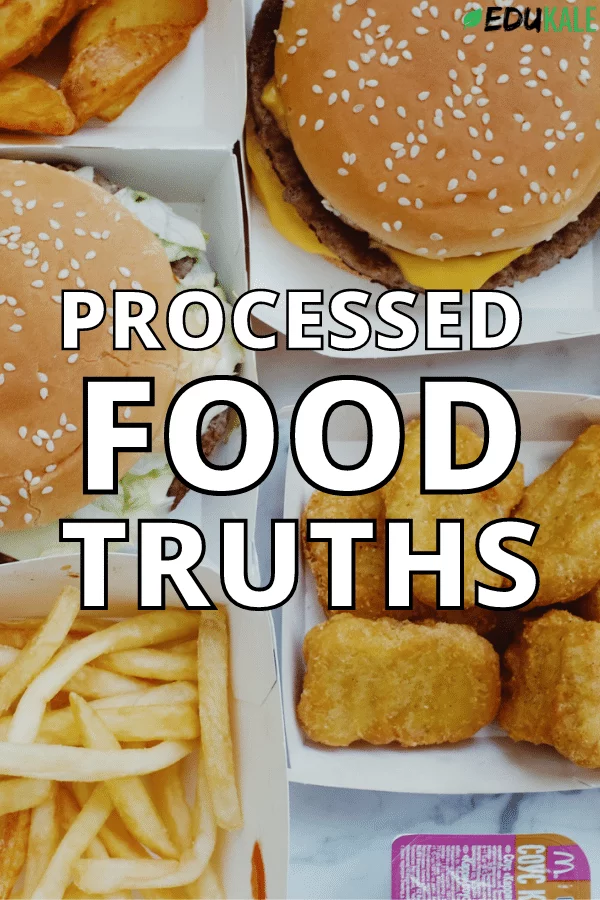
What are processed foods?
According to the academy of nutrition and dietetics [1], “Processed food” includes food that has been cooked, canned, frozen, packaged, or changed in nutritional composition by fortifying, preserving, or preparing in different ways. Any time we cook, bake or prepare food, we’re processing food.”
So actually, nearly all foods are processed, at least to some extent. For example, if you’re eating frozen veggies, they have been cut and frozen, so processed, technically.
The different types of processed foods
So foods aren’t just automatically unhealthy because they’ve been processed: you also need to factor in the degree of processing. For this, we can look at the NOVA food classification system, which has its flaws but is a good way to get an overview.
NOVA helps people “group foods according to the extent and purpose of the processing they undergo.” Food processing as identified by NOVA involves “physical, biological, and chemical processes that occur after foods are separated from nature, and before they are consumed or used in the preparation of dishes and meals.” [2]
This doesn’t involve anything that you would do to the food afterward, like cutting and cooking. There are four groups in this NOVA food classification:
The first group includes foods that are not processed or very minimally processed
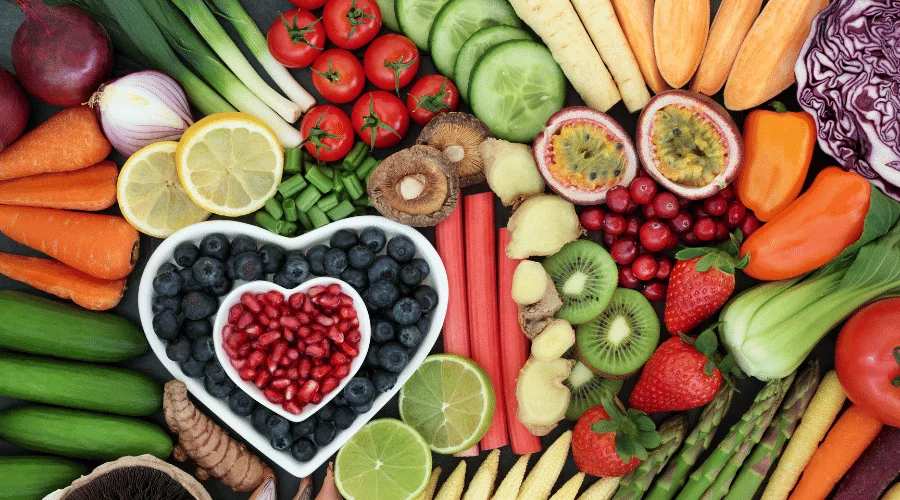
In this first food group, you can find foods like fruit and vegetables, grains, beans or any type of legumes, nuts and seeds… This group also includes animal products that haven’t been processed, like whole meat cuts that haven’t been grounded, seafood, as well as milk and yogurt with no added ingredients.
The second food group is processed culinary ingredients
This involves things that you can use to cook the food from the first category, directly extracted from these foods.
This includes things like oil, butter, sugar, honey, syrup…
The third group is the processed foods group
These are the foods from the first and second categories where something has been added like oil, salt, sugar… Canned vegetables that are stored in salt or vinegar, fruits that are stored in sugar or syrup… Bacon and canned fish are also part of this category.
The fourth category is the ultra-processed category
You can hardly tell that these foods come from group one foods. They have been made from multiple different sources and it’s hard to recognize the actual food that they come from. These are all the things like fatty sugary snacks, biscuits, cookies, ice cream, chocolate, candy, soda … Along with any pre-prepared meals like pizza, pre-made burgers, etc.
Now this doesn’t necessarily mean that all of the fourth-category foods are really unhealthy for you and that the first-category foods are necessarily good for you.
For instance, the scientific consensus is that red meats aren’t great for your health, yet they are in group one non-processed foods. Conversely, if you take a lentil patty from group 4, it will be healthy despite its “ultra-processed” status.
Many aspects must be taken into consideration— not just the degree of transformation that the food has gone through. But again, the NOVA classification is a great way to get a general idea.
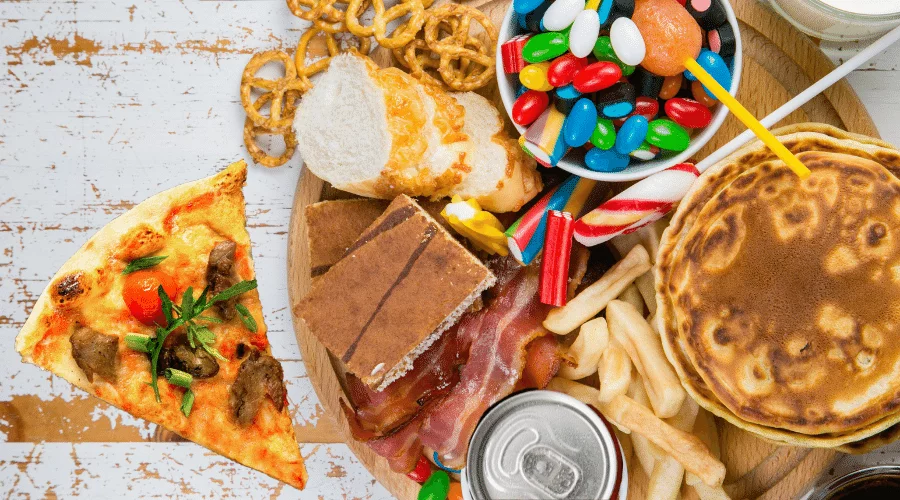
A different way to look at things
Another simpler way to look at it is to use Dr. Greger‘s definition of processed foods. According to him, whole unprocessed foods are foods where you have added nothing bad or taken away nothing good.
If we’re talking about minimally processed foods then they definitely aren’t bad and they actually have certain benefits.
Convenience is one aspect: if you’re getting food that has already been processed to some degree it means that you’re going to do less work to eat it.
This can be an easier way to eat healthier because if you don’t feel like getting fresh veggies and peeling and cutting them, you can get a high-quality canned ratatouille instead. The benefits of eating more veggies outweigh the potential additives in the food.
Also, certain additives are actually beneficial:
Preservatives can help with storage so the food lasts longer, which can save money because the food doesn’t go bad as fast.
Some additives include helpful supplementation as well, like soy milk fortified with vitamin b12 and calcium.
The price point is also another factor in favor of certain highly processed foods because while getting fruit and veggies is cheaper than a processed meal, it’s not going to feed an entire family of six people as easily.
This doesn’t mean that I encourage giving your family frozen pizzas for dinner, but it’s important to recognize the privilege behind not choosing highly processed foods.
Processed foods and health
In general, highly processed foods are definitely not as good for your health as most unprocessed foods or minimally processed foods. They are often more refined and less nutrient-dense: by eating 200 calories of ultra-processed foods you may not be getting enough fiber, vitamins, minerals, or protein for instance.
Ultra-processed foods are also much higher in calories, which for most people is a downside. Watching your portion sizes is much harder when you’re eating high-calorie processed foods, which are highly palatable but less filling.
Furthermore, some of the additives they contain can be problematic, you can read the article I wrote on additives and preservatives HERE.
Processed foods also usually contain more salt/sugar/fat, which are not beneficial long term.
Time and time again, research shows that those who follow diets rich in whole, nutrient-dense foods live longer and have a lower risk of developing chronic health conditions than people who consume diets high in ultra-processed foods.
On the other hand, diets high in ultra-processed foods such as fast food, sweets, and soda have been consistently linked to increased disease risk and a shorter life expectancy.
Again, this doesn’t mean that you should be scared of processed foods, but it’s important to find a good balance between all types of foods, all while focusing on incorporating more whole foods into your diet.
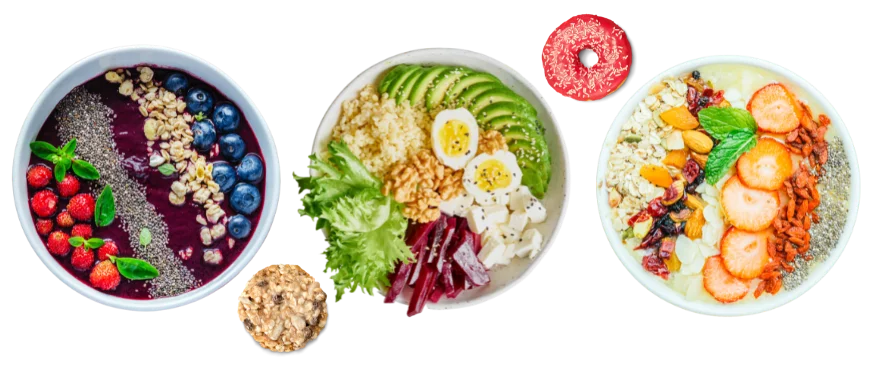
How to eat fewer processed foods and more whole foods
So now that we know that processed foods are okay, that ultra-processed foods need to be limited, and that whole foods need to be consumed as much as possible, here are a few tips to help make the transition less painful.
Focus on what to add instead of what to take away
If you’re focusing on all of the processed foods that you’re not allowed to eat anymore, dwelling on your favorite foods that you’re going to be missing, then it’s going to be really hard to have a sustainable and balanced diet.
Indeed, you’re going to enter a restriction mode which will lead to you bingeing on all of the “forbidden foods”. So instead of that, try focusing on all of the delicious non-processed foods that you can add to your diet.
If you’re more focused on creating a meal around one particular vegetable that you enjoy, or having one fruit that you love for dessert, or making a meal around your favorite grain, then naturally you will have less room for the ultra-processed foods and it won’t seem like you have to cut them out of your life entirely.
If you’re eating mainly whole, minimally processed foods that you really enjoy and having balanced meals where you’re eating enough, the ultra-processed foods will easily be reduced.
You’ll start to see them more like treats that you have once in a while. Since you’re not labeling them as bad and not focusing on the fact that you can’t have them anymore, they’re not going to hold this huge power over you and you’re going to be able to have a healthy balanced meal and then have a cookie at the end.
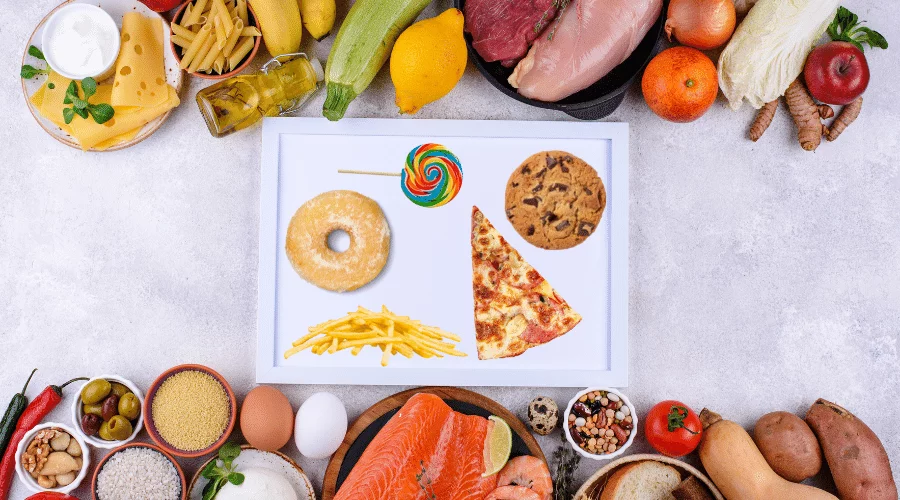
Take things slow
When you’re replacing your highly processed foods with more whole foods, then I suggest that you take it little by little. Replacing your orange soda with a fresh orange all of a sudden might be a little difficult, but trying out freshly squeezed orange juice might be more realistic.
You can also try to find alternatives for your favorite highly processed meals. Making your own homemade pizza with fresh ingredients is more beneficial than buying the frozen ready-made one for instance.
Convenience is key
Finally, you really need to try and make whole foods as convenient as processed foods. Evidently, if you get home from a long day of work and you have to cook an entire meal from scratch, that’s not as appealing as just popping a pre-made lasagna dish into the oven.
This is where meal planning and meal prepping come in: if you’re able to prep your meals on one day for the entire week, that is ideal but not always doable.
As an easier alternative, I recommend cooking bigger portions when you do cook so that you can just package the leftovers for the next day.
You can also rely on foods that are minimally processed that don’t really count as processed foods, like frozen or canned veggies, baked beans or lentils, microwavable rice, etc.
Make the healthy options as convenient as possible!

In short
So the truth about processed foods is the following:
You should be eating as many whole, minimally processed foods as possible while limiting ultra-processed foods. But that doesn’t mean that processed foods are automatically unhealthy or bad for you, nor that you should cut them out of your life entirely. As usual, it’s all about balancing health and pleasure!
-Lucie
MORE SOURCES:
https://pubmed.ncbi.nlm.nih.gov/30744710/
https://pubmed.ncbi.nlm.nih.gov/32796919/
https://www.bmj.com/content/365/bmj.l1949

